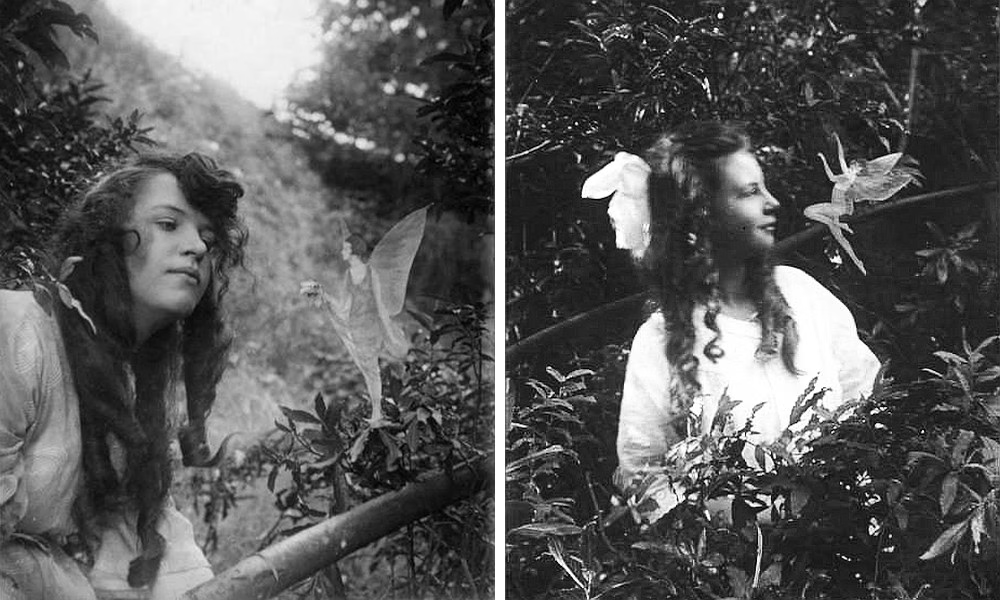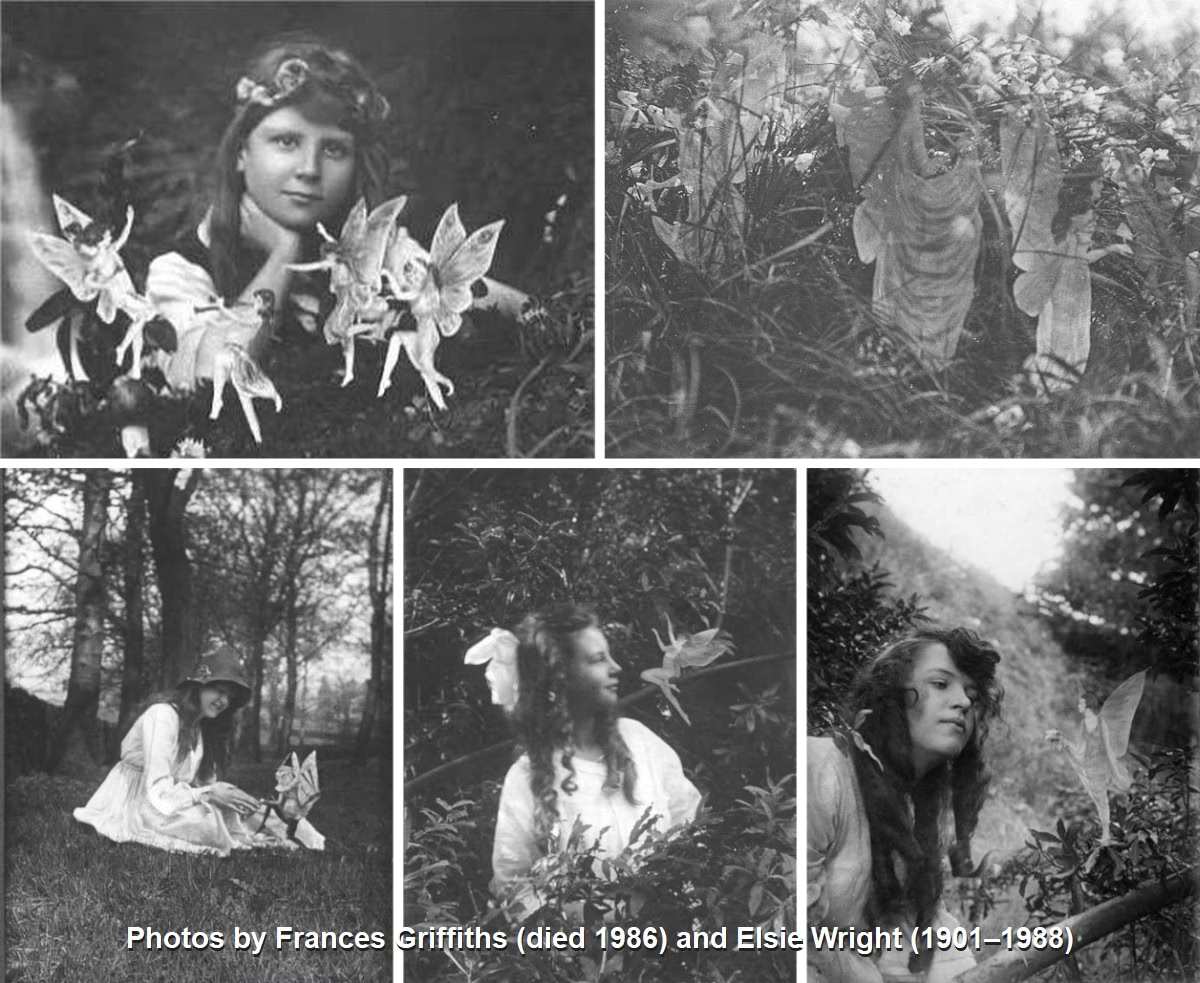
In 1917, two young girls in Cottingley, England, produced photographs of what they claimed were real, live fairies. The images — showing tiny winged creatures dancing near them — convinced many people at the time, including none other than Sir Arthur Conan Doyle, the creator of Sherlock Holmes.
The Cottingley Fairies weren’t just a charming story. They showed how easily wishful thinking can override skepticism, even among the smartest minds. In an era recovering from the horrors of World War I, many people desperately *wanted* to believe in magic, innocence, and unseen wonders.
The hoax became a symbol of how folklore, technology (photography was still seen as almost magical itself), and psychological need could combine into mass delusion.
In the summer of 1917, 16-year-old Elsie Wright and her 9-year-old cousin Frances Griffiths were tired of being scolded for playing near a stream. So they borrowed Elsie’s father’s camera and returned with “proof” that they were meeting fairies. The resulting photos showed Frances posing with small winged beings.
Elsie’s father thought it was nonsense. Her mother, however, believed. Big time.
Two years later, in 1919, the photographs somehow caught the attention of Edward Gardner, a member of the Theosophical Society — a group already inclined toward belief in mystical phenomena. Gardner brought the photos to Sir Arthur Conan Doyle, who was a passionate spiritualist despite writing one of the most logical characters in all literature.
Conan Doyle was *so* convinced the photos were genuine that he published an entire article in *The Strand Magazine* in 1920 declaring them authentic evidence of supernatural life. It was probably the most un-Sherlock move Sherlock’s dad ever made.
There were five photos in total. They showed: Frances with dancing fairies; Fairies in a sunbath; Elsie leaning toward a gnome; Frances and a fairy offering a bouquet; Elsie with a fairy.
The fairies had fashionable hairstyles, cute outfits, and suspiciously flat, cardboard-like appearances. Some viewers noticed this…but not everyone cared.
In the early 1980s — decades after the events — the now elderly Elsie and Frances finally confessed. They had used cardboard cutouts, copied from illustrations in a popular children’s book called *Princess Mary’s Gift Book*.
They staged the photos using hatpins to prop the “fairies” up. Elsie, who had artistic talent, drew the figures herself.
But here’s the kicker: Frances insisted until her death that *one* of the five photos (the last one) was real. Skeptics, however, believe that’s unlikely.
The Cottingley Fairies highlight a lesson we still need today: just because someone provides “evidence” doesn’t mean it’s real. And authority figures — no matter how brilliant — are just as prone to wishful thinking as anyone else.
Modern versions of the Cottingley Fairies play out online every day. Deepfakes, doctored images, AI-generated content — all exploit the same basic human trust in visuals and emotional narratives.





